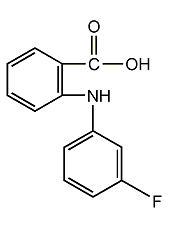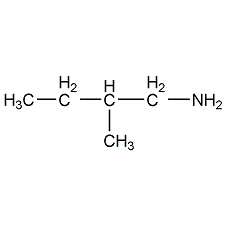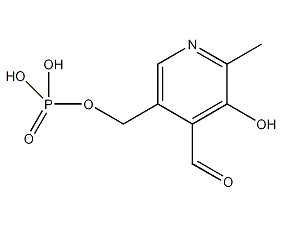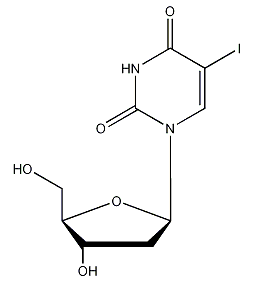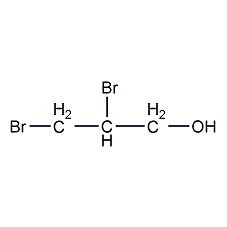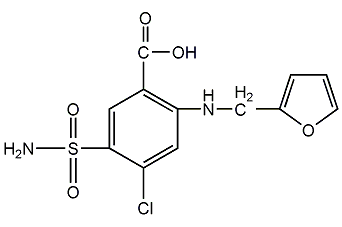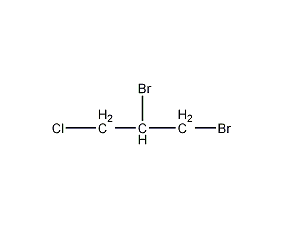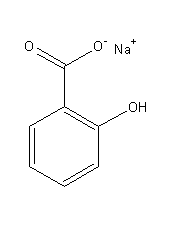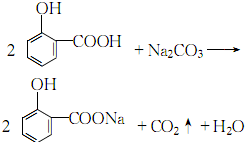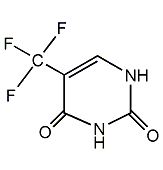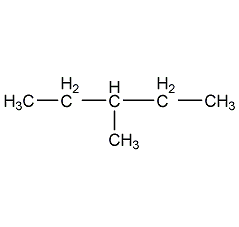
Structural formula
| Business number |
02AJ |
| Molecular formula |
C6H14 |
| Molecular weight |
86.18 |
| label |
3-methylphenol methyl ester,
Diethylmethylmethane,
(±)-3-methyl-pentene,
3-Methylpentan,
3-Methyl-pentan,
spectrum analysis
|
Numbering system
CAS number:96-14-0
MDL number:MFCD00009342
EINECS number:202-481-4
RTECS number:SA2995500
BRN number:1730734
PubChem number:24885749
Physical property data
1. Properties: Colorless, transparent and volatile liquid. [1]
2. Melting point (℃): -118[2]
3. Boiling point (℃): 63.3[3]
4. Relative density (water = 1): 0.66[4]
5. Relative vapor Density (air=1): 2.97[5]
6. Saturated vapor pressure (kPa): 20.5 (20℃)[6]
7. Heat of combustion (kJ/mol): -4155.5[7]
8. Critical temperature (℃): 231.2[8]
9. Critical pressure (MPa): 3.12[9]
10. Octanol/water partition coefficient: 3.6 [10]
11. Flash point (℃): <-20[11]
12. Ignition temperature (℃) :278[12]
13. Explosion upper limit (%): 7.0[13]
14. Explosion lower limit (%) %): 1.2[14]
15. Solubility: Insoluble in water, slightly soluble in ether, acetone, benzene, soluble in ethanol. [15]
16. Critical compression factor: 0.274
17. Critical volume (cm3·mol -1): 368
18. Critical density (g·cm-3): 0.234
19. Eccentricity factor: 0.274
20. Lennard-Jones parameter (A): 11.54
21. Lennard-Jones parameter (K): 169.3
22. Solubility parameter (J· cm-3)0.5: 14.674
23. van der Waals area (cm2·mol– 1): 9.630×109
24. van der Waals volume (cm3·mol-1): 68.250
25. Gas phase standard combustion heat (enthalpy) (kJ·mol-1): -4189.77
26. Gas phase standard claim Heat (enthalpy) (kJ·mol-1): -172.09
27. Gas phase standard entropy (J·mol-1·K-1): 383.0
28. Gas phase standard free energy of formation (kJ·mol-1): -3.3
29. Gas phase standard hot melt (J·mol-1·K-1): 142.12
30. Liquid phase standard combustion heat (enthalpy) (kJ ·mol-1): -4159.48
31. Liquid phase standard claims heat (enthalpy) (kJ·mol-1): -202.38
32. Liquid phase standard entropy (J·mol-1·K-1): 292.55
33. Liquid phase Standard free energy of formation (kJ·mol-1): -6.83
34. Liquid phase standard hot melt (J·mol-1·K -1):190.99
Toxicological data
1. Acute toxicity No data available
2. Irritation No data available
Ecological data
1. Ecotoxicity No data available
2. Biodegradability No data available
3 .Non-biodegradable[16] In the air, when the concentration of hydroxyl radicals is 5.00×105/cm3, the degradation half-life is 2.8d (theoretical).
4. Other harmful effects[17] This substance may be harmful to the environment , special attention should be paid to the pollution of surface water, soil, atmosphere and drinking water.
Molecular structure data
1. Molar refractive index: 29.80
2. Molar volume (cm3/mol): 127.9
3. Isotonic specific volume (90.2K ): 268.2
4. Surface tension (dyne/cm): 19.3
5. Polarizability (10-24cm3): 11.81
Compute chemical data
1. Reference value for hydrophobic parameter calculation (XlogP): 3.2
2. Number of hydrogen bond donors: 0
3. Number of hydrogen bond acceptors: 0
4. Number of rotatable chemical bonds: 2
5. Number of tautomers: none
6. Topological molecule polar surface area 0
7. Number of heavy atoms: 6
8. Surface charge: 0
9. Complexity: 19.2
10. Number of isotope atoms: 0
11. Determine the number of atomic stereocenters: 0
12. Uncertain number of atomic stereocenters: 0
13. Determine the number of chemical bond stereocenters: 0
14. Number of uncertain chemical bond stereocenters: 0
15. Number of covalent bond units: 1
Properties and stability
1. Stability[18] Stability
2. Incompatible substances[19] Strong oxidants, strong acids, strong bases, halogens
3. Polymerization hazard[20] No polymerization
Storage method
Storage Precautions[21] Store in a cool, ventilated warehouse. Keep away from fire and heat sources. The storage temperature should not exceed 37℃. Keep container tightly sealed. should be kept away from oxidizer, do not store together. Use explosion-proof lighting and ventilation facilities. It is prohibited to use mechanical equipment and tools that are prone to sparks. The storage area should be equipped with emergency release equipment and suitable containment materials.
Synthesis method
None
Purpose
Used in organic synthesis and as solvent. [22]
extended-reading:https://www.newtopchem.com/archives/44579extended-reading:https://www.bdmaee.net/fascat9201-catalyst-dibutyl-tin-oxide-fascat9201/extended-reading:https://www.bdmaee.net/catalyst-a300-a300-nt-cat-300/extended-reading:https://www.morpholine.org/amine-catalyst-dabco-8154-catalyst-dabco-8154/extended-reading:https://www.cyclohexylamine.net/bx405-catalyst-dabco-bx405-polyurethane-catalyst-dabco-bx405/extended-reading:https://www.newtopchem.com/archives/44472extended-reading:https://www.bdmaee.net/dioctyltin-oxide-cas-818-08-6-dibutyloxotin/extended-reading:https://www.bdmaee.net/wp-content/uploads/2022/08/33.jpgextended-reading:https://www.bdmaee.net/fentacat-f50-catalyst-cas122695-73-9-solvay/extended-reading:https://www.newtopchem.com/archives/40368
